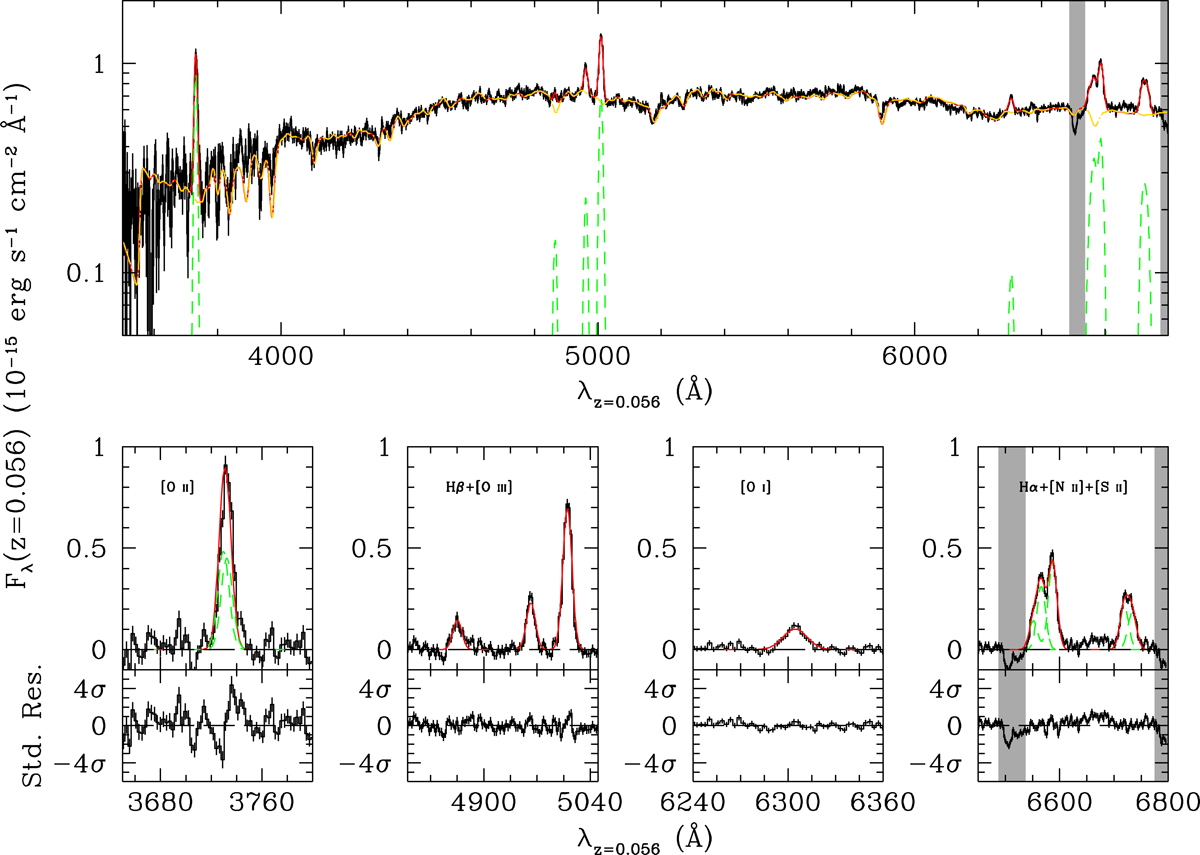Fig. 4.

Download original image
Model of the rest-frame spectrum of I20210N. Upper panel: full I20210N spectrum (black solid line), along with the best-fit starlight model adopted for continuum subtraction (yellow dot-dashed line), the best-fit reddened emission profiles (green short-dashed lines), the global spectral model (red solid line), and the masks applied to the telluric absorption lines (grey bands) shown superimposed to the data. Lower panels: zoom on the continuum-subtracted emission lines (black solid line), shown along with the global best fit (red solid line) and the best-fit single components (green short-dashed lines) for the blended [O II] doublet, Hα+[N II] and [S II] transitions. The standardized residuals after the best-fit subtraction are also shown in separate windows below each spectral region. In all panels, the zero-level flux (black long-dashed line) is indicated; in the panel with Hα+[N II] and [S II], the masks applied to the telluric absorption lines (grey bands) are shown superimposed to the data.
Current usage metrics show cumulative count of Article Views (full-text article views including HTML views, PDF and ePub downloads, according to the available data) and Abstracts Views on Vision4Press platform.
Data correspond to usage on the plateform after 2015. The current usage metrics is available 48-96 hours after online publication and is updated daily on week days.
Initial download of the metrics may take a while.


